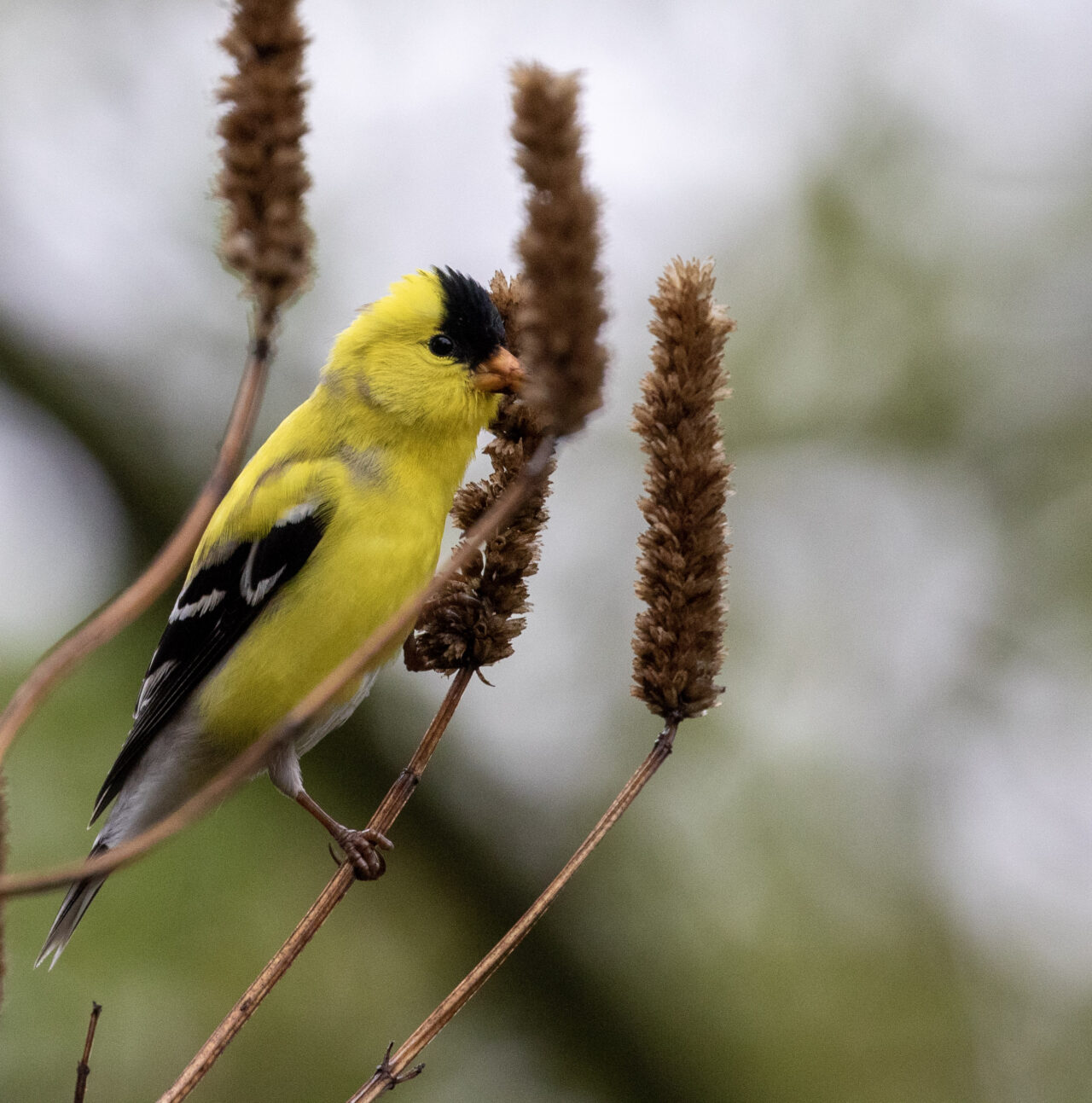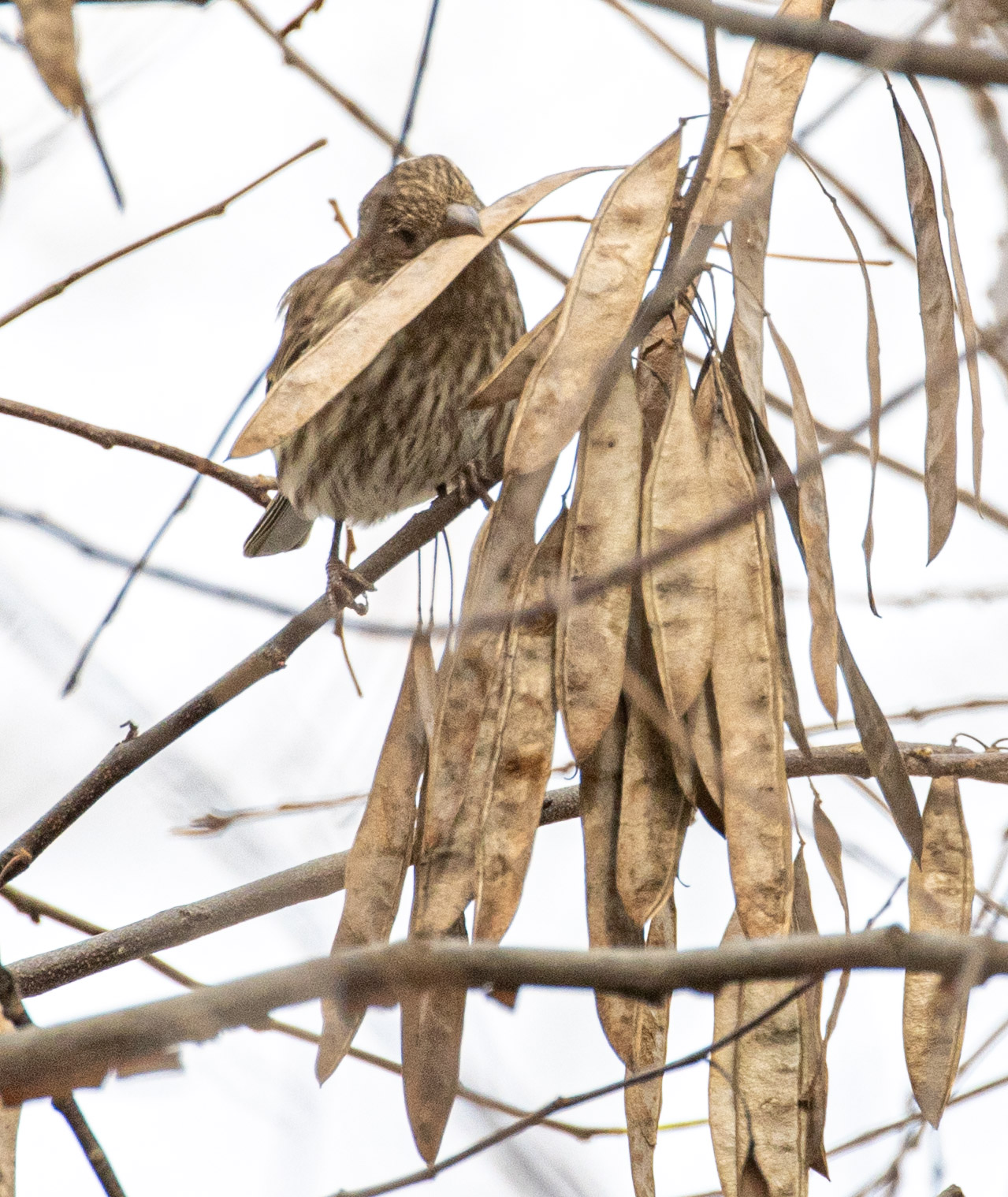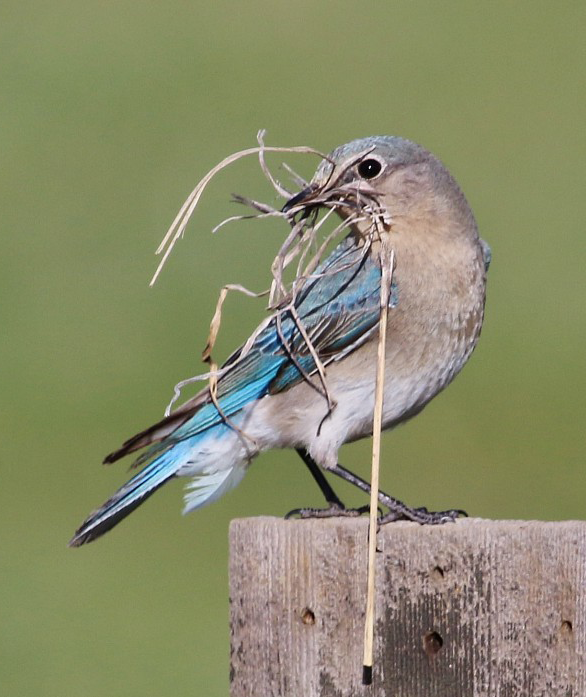Fall Gardening for Spring Nesting
October 8, 2025By Mhairi McFarlane, Cornell Lab of Ornithology Bird-Friendly Landscapes Project

One-Stop Grocery Store
Native plants provide seeds, nuts, and fruits that birds love. and they create great habitat for insects, which are a critical food source during the nesting season.
By autumn in the northern hemisphere, the majority of bird species have finished breeding, and millions of birds are on the move, heading south to their wintering areas. Green spaces are no longer filled with the spring cacophony of territorial bird song, but on a good morning you’ll still hear plenty of “chips” and the occasional smattering of songs—often quieter and curtailed versions of what resonated all around us in the breeding season! It’s a great time to improve wintering habitat for birds, an endeavor which can be very rewarding for you too. Watching sparrows hunting for seeds among leaf litter or goldfinches foraging for seeds on standing seedheads from your native plants is a very satisfying experience!
Fall is a great time to re-visit any nest boxes you take care of. Birds are done using them for nesting, so it’s okay to clean them out and do any repairs that are needed so they are ready to go for next year. Some birds may be hanging around nest boxes in autumn as they consider potential roosting spots for winter. You can help by winterizing your nest boxes. It’s also a good time to add new boxes. Ideally, you’ll want to get them built and installed before the ground freezes—if that happens in your area—and well before the onset of spring breeding so that the birds have a chance to find them before they decide where to nest. Save yourself the hard work and numb fingers by doing these tasks before winter sets in!
“If you have a garden, fall can be a great time to add native plants, which provide valuable resources to birds during the nesting season.”
Another thing to consider is leaving—or adding—other habitat features to your yard to help our feathered friends, both those that are sticking around and those that are still migrating through. If you have a garden, fall can be a great time to add native plants, which provide valuable resources to birds during the nesting season. Not only do native plants produce seeds and fruits themselves, they make great habitat for insects, too, which are a critical food source for songbird nestlings. Many nurseries have end-of-season sales, and although many of the plants may look past their best or already be dormant, getting them into the ground in fall can give these plants a head start in spring. Avoid “cleaning up” your garden, and try being a “lazy gardener” this year. Allow yourself to not do too much other clean up before winter –e.g., don’t deadhead native plants, and leave stems and other plant debris. Leave any fallen leaves where they are in your yard, or gently rake them onto your flowerbeds. Leaf litter is great overwintering habitat for the pupae of many moths and butterflies, which emerge to ultimately provide essential food to nestling birds next summer. Dead stems and flowerheads are homes for nesting bees and many other important insects. Check out our introductory FAQ on leaving leafy resources over the winter to help wildlife. You can also try propagating your own native plants from seed – check out this basic how-to here.
If you have nest boxes which haven’t attracted birds in the past, or where nestlings have failed to thrive, then it could be worth thinking about the habitat immediately surrounding the box. By removing non-native plants, and replacing them with native plants which support more insects, fruits, nuts, and seeds as food, you’ll be creating even better habitat for your future nest box inhabitants.

Bird Buffet
The seed pods of the Eastern Redbud provide valuable energy to seed-eating songbirds, like this House Finch, as autumn sets in.

Built From Nature
Mountain Bluebirds use dry grass stems and other vegetation to build their nest cup inside a cavity. They'll line the cup with finer plant materials.

2 comments on “Fall Gardening for Spring Nesting”
Thank you for this great article. I appreciate all you do to promote education and environmental improvements for our feathered friends.
Thanks to CornellLab! Since 2012 when I moved to a 3 acre lot, I’ve been an avid learner of birds. I’ve also planted many native plants and shrubs to help sustain them. I reside in a semi rural area in Central Ohio. I’m one of the very few homes in my area that still has trees. I use no pesticides and spend an hour or so each morning tending to the birds. I’ve seen and experienced so much happiness because of nature.
I am so grateful to CLO!